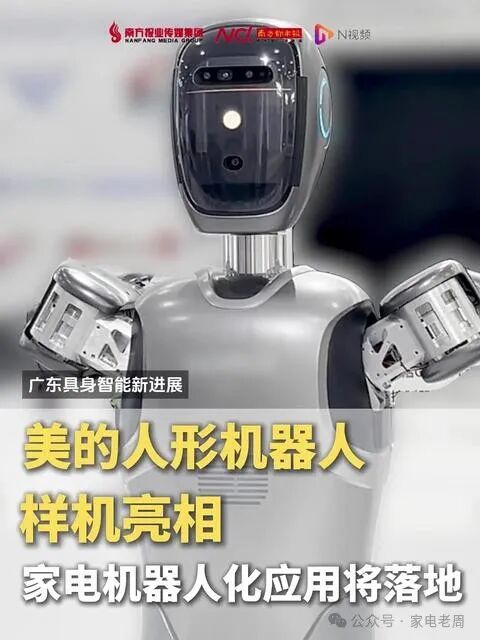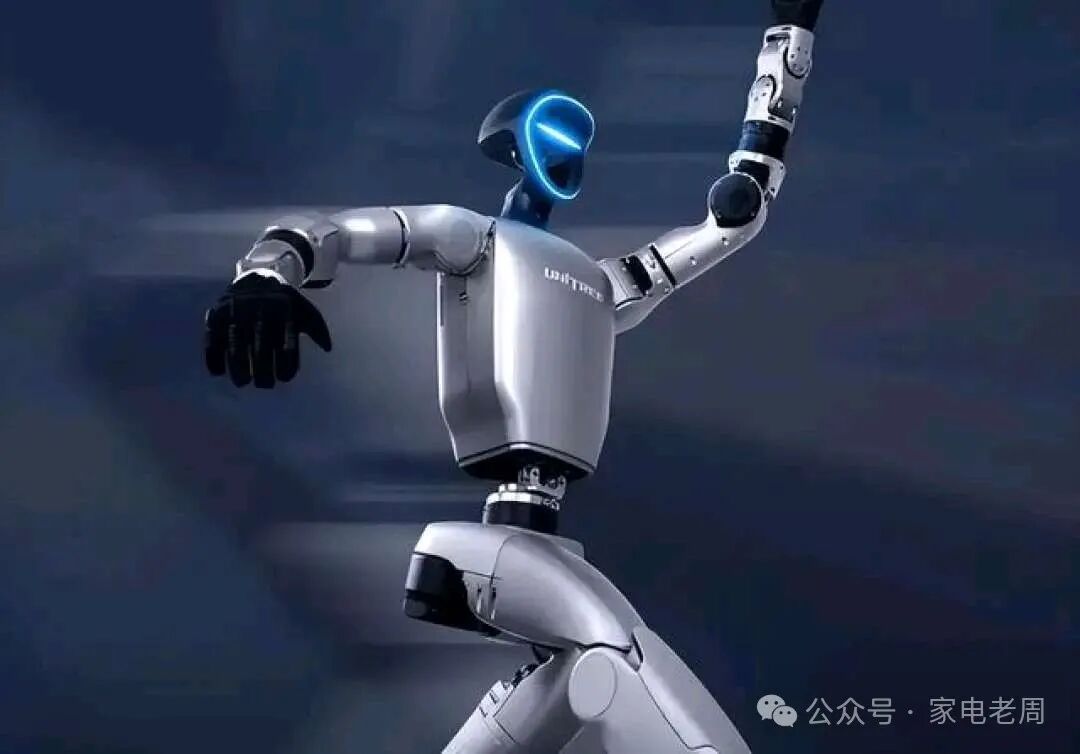In today’s rapidly advancing technology landscape, humanoid robots are transitioning from science fiction to reality. By 2025, with the rapid progress of AI technology, the humanoid robot industry is poised for unprecedented development opportunities.

Midea Group’s entry into this field is particularly noteworthy, as its self-developed humanoid robot has officially started “working in factories”. This not only marks an important step for the application of humanoid robots in the industrial sector but also fills us with anticipation for the future of “new home appliances” entering households.
Midea’s Humanoid Robot Enters “Working” Mode
Midea Group’s layout in the humanoid robot field has been both rapid and solid. Its self-developed humanoid robot officially began operations in May at a washing machine factory in Jingzhou, Hubei, taking on tasks such as equipment inspection, component testing, and simple assembly.
This robot was jointly developed by Midea’s Central Research Institute and KUKA, featuring a unique wheeled-foot design that allows seamless integration into automated factories. It excels in tasks such as machine operation inspection, equipment testing, and material handling, while also adapting to unstructured environments, laying a solid foundation for future household applications.
During a demonstration in March, Midea’s humanoid robot showcased various actions such as handshakes, heart signs, dancing, and screwing, and it can interact with people through voice commands to perform corresponding operations, demonstrating its strong interactive capabilities and flexibility.
A relevant person from Midea’s Central Research Institute revealed that this year will focus on advancing iterations of fully humanoid and humanoid-like robot products, addressing issues such as battery life, data collection and simulation, and lightweight joints. Although the industrialization of humanoid robots will take another 3-5 years, Midea has already made progress in the robotization strategy for home appliances, exploring innovative integrations of vacuum cleaners, floor washers, and robotic arms.
The Market Potential for Humanoid Robots is Enormous
2025 is considered the year of mass production for humanoid robots, with many companies increasing their investments. According to data from the Gaogong Robot Industry Research Institute, the global humanoid robot market size is expected to reach approximately $1.017 billion in 2024, and is projected to reach $15 billion by 2030, with a compound annual growth rate exceeding 56%.
The market size in China is expected to approach 38 billion yuan by 2030, with sales growing from 4,000 units to 271,200 units. In 2024, there were 69 financing events for global humanoid robots, totaling over 11 billion yuan, with 56 of these occurring in China, amounting to over 5 billion yuan.
Policy support has also been robust. The 2025 government work report explicitly proposed support for the widespread application of large AI models and the vigorous development of intelligent robots and other new-generation smart terminals.
Cities like Beijing, Shanghai, Shenzhen, and Chongqing have established industrial funds to promote the development of the humanoid robot industry. In terms of applications, UBTECH’s Walker S series has entered training at several leading companies, while Xiaopeng’s IRON humanoid robot is also undergoing training at a factory in Guangzhou, with plans for large-scale production in 2026. Tesla’s Optimus and Figure’s second-generation humanoid robots are also being utilized in automotive factories.
Household Scenarios: The Ultimate Vision for Humanoid Robots
Compared to industrial scenarios, the entry of humanoid robots into households may be the ultimate goal of industry development. Haier Group’s Vice President Shu Hai has stated that Haier’s robot research and development primarily focuses on household usage scenarios, aiming to achieve comprehensive mechanization of household activities and promote the arrival of a “no-housework” era. The International Electrotechnical Commission recently released international standards for elderly care robots, led by China, providing benchmarks for the design, manufacturing, testing, and certification of elderly care robots.
With breakthroughs in large models and embodied intelligence, the development of smart home appliances is accelerating, and the combination of whole-home AI and embodied intelligence is becoming the ideal scenario for future households. Humanoid robots are expected to expand and extend smart home capabilities, taking on functions such as household chores, service, and care, becoming the next generation of “new home appliances.” The layout of humanoid robots by home appliance companies is not only in line with the development trends of the manufacturing industry but also an inevitable choice for the evolution of home appliances.
 Midea’s humanoid robot “working in factories” is just the beginning; in the future, humanoid robots will demonstrate their value in more fields. We look forward to that day and believe that in the near future, “new home appliances” will enter thousands of households, opening a new chapter in intelligent living.
Midea’s humanoid robot “working in factories” is just the beginning; in the future, humanoid robots will demonstrate their value in more fields. We look forward to that day and believe that in the near future, “new home appliances” will enter thousands of households, opening a new chapter in intelligent living.